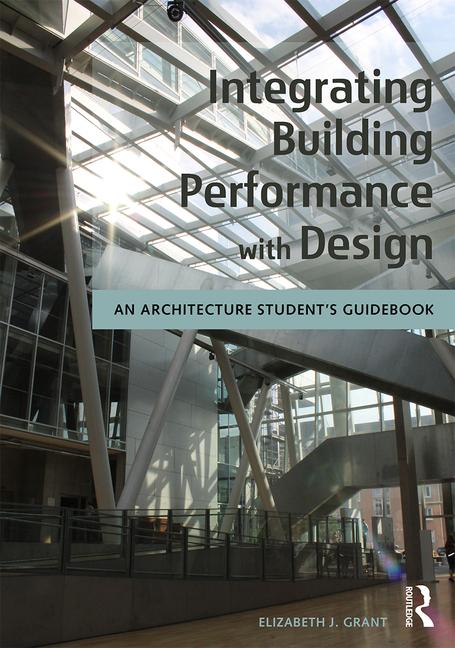The American Institute of Architects (AIA) has conferred on Knight Architecture LLC this year’s AIA Institute Honor Award for Architecture in recognition of the firm’s work on the Yale Center for British Art building conservation project. An iconic modern structure designed by the American architect Louis I. Kahn, the building and the majority of the collections it houses were an extraordinary gift to Yale University by Paul Mellon (Yale College, Class of 1929).
The AIA jury noted, “This project was a massive undertaking and serves as a prime example of a thoughtful and prudent update to a building with deep architectural merit.” Following meticulous research on Kahn’s architectural vision, the project upgraded outmoded systems and amenities and restored aging public spaces in accordance with exacting conservation standards. The award is the profession’s highest recognition of buildings that exemplify excellence in architecture. Selected from roughly seven hundred submissions, Knight Architecture LLC is among 23 recipients from around the world that will be honored at the AIA Conference on Architecture to be held in Orlando, Fla., in April 2017.
“We are extremely proud of Knight Architecture’s work, which has resulted in this distinguished award,” said Yale Center for British Art Director Amy Meyers. “We consider our building to be our largest and most complex object—a cherished work of art, in itself, that houses one of the greatest collections of British art in the world. Preserving the building’s distinctive architectural character, as designed by Kahn, was of the utmost importance as we planned our conservation project, and George Knight and his colleagues understood this imperative with extraordinary sensitivity.”
The Center reopened to the public on May 11, 2016, after a 16-month closure of the building, marking the completion of the third phase of a multiyear building conservation project. This was the most ambitious conservation work undertaken at the Center to date, comprising major aspects of the entire structure, from roof to basement. The first phase of work included the rehabilitation of the Center’s exterior Lower Court (2008–11) and extensive repairs to the adjacent Lecture Hall lobby (2011–13).
This was followed by two additional phases addressing the building’s interior spaces: the second phase focused on refurbishing the areas used by the departments of Prints & Drawings and Rare Books & Manuscripts (2013); the third phase included enhancing the Center’s public spaces (namely the galleries and Lecture Hall), extensive building-wide mechanical and electrical upgrades, and improvements to fire protection, security systems, and accessibility (2015–16).
The conservation project followed more than a decade of research on the history of the design, construction, and renovation of the Center’s landmark building, which resulted in the publication in 2011 of Louis Kahn and the Yale Center for British Art: A Conservation Plan by the Center in association with Yale University Press. Written by London architects Peter Inskip and Stephen Gee, of the firm Peter Inskip + Peter Jenkins Architects Ltd., with Constance Clement, the Center’s deputy director, this book details the conservation plan and proposes a series of policies for the building’s maintenance in the years ahead.
Clement managed all phases of the building conservation project, led by Knight Architecture LLC. Yale University Office of Facilities served as project planner and manager, Turner Construction Company had the role of construction manager, and Peter Inskip + Peter Jenkins Architects Ltd. remained conservation consultants throughout.
George Knight, the founding principal of Knight Architecture LLC, is a 1995 graduate of the Yale School of Architecture, where he has taught drawing and architectural design since 2004. In 2015, Knight was selected by the graduating students to receive the Professor King-lui Wu Teaching Award, which is given to a faculty member who combines architectural practice with outstanding teaching. A graduate of Princeton University, Knight previously worked for ten years at Pelli Clarke Pelli Architects in New Haven, Conn.
“Designed by a master architect working at the apex of his creative powers, Louis Kahn’s Yale Center for British Art has been a sanctuary, an inspiration, and classroom for me since I first set foot onto the magnificent Yale campus as a graduate student 25 years ago. Understated and sublime, the Center exemplifies Kahn’s self-assurance and maturity in designing the third and final museum building of his extraordinary career,” said Knight. “It was an unparalleled professional and intellectual privilege, as we embarked on a conservation project that touched virtually every surface of the building, to invest ourselves into the Center’s brilliant spatial arrangements, material logic, infrastructural systems, and programmatic rationale. In the face of pervasive and inescapable strains on the building’s fabric after forty years of operation, it was always our objective to safeguard the Center’s cultural significance as an architecture masterwork, to ensure that Kahn’s sense of serene order prevails, and to showcase the collection to visitors, scholars, and students as envisioned by all those who first devised the building.”
Knight was assisted in the Center’s building conservation project by designers Daphne Kalomiris and Nikolaos Tombras. Kalomiris joined Knight Architecture LLC following her graduation from the Yale School of Architecture (M.Arch) in 2012 and served as project architect for the last two phases of the conservation project. She is also an alumna of the University of Miami School of Architecture (B.Arch). Tombras was the project designer for the final two phases of the project. A graduate of the Virginia Polytechnic Institute and State University, he joined Knight Architecture LLC in 2013, having previously practiced in Washington, D.C.
Building Conservation Project Highlights
The Long Gallery was transformed into a teaching and study gallery as originally envisioned by Jules Prown, the Center’s founding director, in partnership with Louis Kahn. Walls which had previously subdivided the space were removed, allowing for an unobstructed view of the 140-foot-long space housing the collection in a floor-to-ceiling salon-style hang. Finishes were revived similarly to those found in the main galleries and circulation adjacent to public areas on the fourth floor were improved. A new Collections Seminar Room was created from a former administrative office at the east end of the Long Gallery. New floor-to-ceiling white oak wall panels incorporate discreet yet flexible art display systems, which allow faculty, students, and visiting scholars to engage in the close study of objects from the collection, under diffused natural light. The room also features new custom white oak furniture and cabinetry, as well as updated electrical and telecommunications systems.
The public galleries on the second, third, and fourth floors were renewed and reconfigured to preserve Kahn’s vision of intimate viewing spaces echoing the domestic setting of an English country house. Exterior walls were reinsulated and corrosion treated, the interior of the walls was rebuilt, and the display walls were refreshed with new natural Belgian linen. Worn synthetic carpeting was replaced with new wool carpet, existing white oak trim was refinished, and select damaged travertine floor tiles were repaired or replaced. Existing moveable gallery partitions, known as “pogo” walls, were replaced with new pogos, based closely on Kahn’s original design.
The Library Court evokes the spirit of a Great Hall in an English country house and features the iconic cylindrical stair tower. This three-story court at the heart of the Center links the galleries, Reference Library and Archives, and Study Room. The original white oak wall panels and wood flooring were renewed with Greenguard Certified refinishing products, as part of the conservation project.
The Entrance Court extends upward to four stories and is the only top-lit space within the Center receiving unfiltered natural light. Its sun-bleached white oak wall panels were also restored in place and by hand using Greenguard Certified refinishing products.
The Lecture Hall was refurbished for the first time since the Center opened to the public in 1977. It now features a completely renovated audiovisual system with state-of-the-art recording and presentation capabilities, new theatrical and house lighting, and enhanced Wi-Fi coverage. The Lecture Hall accommodates 200 new fixed seats and five wheelchair and accessible spaces. New stainless steel handrails and LED step lights flank the aisles for added safety. Worn carpeting and wood flooring were replaced to match the original materials.
The concrete cylindrical staircase now has improved patron accessibility and safety features, including a standardized height for steps, fire and smoke precautions, and improved emergency lighting.
First-floor improvements included adding a new egress door to the lobby and an accessible lift at the Center’s loading dock.
Lower-level improvements included enhanced patron amenities and accessibility. The Center added new white oak storage lockers and two gender-neutral restrooms to the basement lobby.
Major building infrastructure upgrades included improvements to mechanical, electrical, fire protection, HVAC, telecommunication, and security and safety services, which were implemented throughout the Center in order to expand resiliency, ensure the stability of the collections’ environment, and enhance the patron experience. The design team developed collaboratively a holistic approach to the infrastructure upgrades to meet the changing needs of the Center and conform to Kahn’s design principles regarding systems integration.
In addition to the 2017 AIA Institute Honor Award for Architecture, Knight Architecture LLC and the Center received the AIA Connecticut 2016 Design Honor Award for Preservation; the AIA New England 2016 People’s Choice Award for Historic Preservation; and the AIA New England 2016 Design Honor Award for Historic Preservation and Adaptive Reuse. The AIA had also honored the Center and architect Louis I. Kahn with its 2005 AIA Twenty-five Year Award, which recognizes significant architectural landmarks that were completed in the last 25 to 30 years and have withstood the test of time.
Turner Construction’s Connecticut office was presented with a Connecticut Building Congress 2016 Project Team Award for its work on the Center’s conservation project.
Visit the Center online at britishart.yale.edu.









